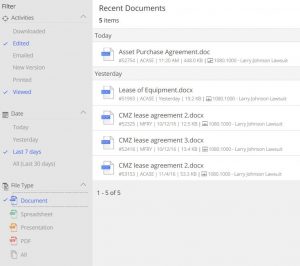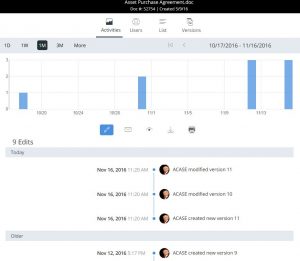It’s now been almost 18 months since iManage split from HP and took charge of its own direction. In that time, they’ve modernized the look and feel of the iManage 9.3 clients in ways that they hadn’t done in the previous five or six years under the Autonomy and HP bureaucracies. The freedom is there now for iManage to innovate and take it to the next level to meet the needs of professionals who are becoming more mobile and particular about their devices. Two recent announcements from the company show that it is paying attention to these demands.
“White Rabbit” is Here
With the release of iManage Work Server 9.4, iManage unveils the new HTML5 responsive interface, which was for years considered vapor-ware by many in the legal technology arena. But it’s real, and it’s impressive. The sleek interface is currently accessible via a web browser pointed to the iManage Work Server. (Just a note though–this is licensed free on desktop workstations for all users licensed for FileSite or DeskSite. For access from a mobile device, separate web or mobile accesses are required.) Once connected, lawyers can access their content from four categories on the main banner – Documents, Emails, Matters, and Clients.
These categories provide easy 
In the example to the right, we see the filters available for documents. The content can be categorized based on the type of activity performed, the dates of those activities, as well as the file format extension. Multiple selections can be made to broaden the resulting document list as well.

Think of WorkSite Server 9.4 as a preview of what the iManage 10 client interface will look like. In preview demos of the iManage 10 client, these responsive HTML5 views will be available from within the Office 2016 environment. While working in Word 2016, the attorney can open a pane and see the edit history of the current document.
Document Co-Authoring
Just this week, iManage announced that it will soon release what it calls an iManage Work Co-Authoring Add-on for 9.3.1. Now, I had seen a brief demo/presentation of this functionality in a preview of iManage 10. But today’s news is welcome, in that current 9.x customers could potentially take advantage of this before planning their upgrades to the 10.x platform.
According to the announcement, “Documents are shared in the firm’s secured OneDrive for Business environment and can seamlessly be brought back into the iManage repository.” So this appears to require that OneDrive for Business be activated and available in the environment. This can be OneDrive on-premises or via Office 365.
The funny thing is, I’ve been wondering for 7 years (!!) when iManage would support co-authoring after it was first announced as part of Office 2010. Well, that day will soon be here. Giddy-up.